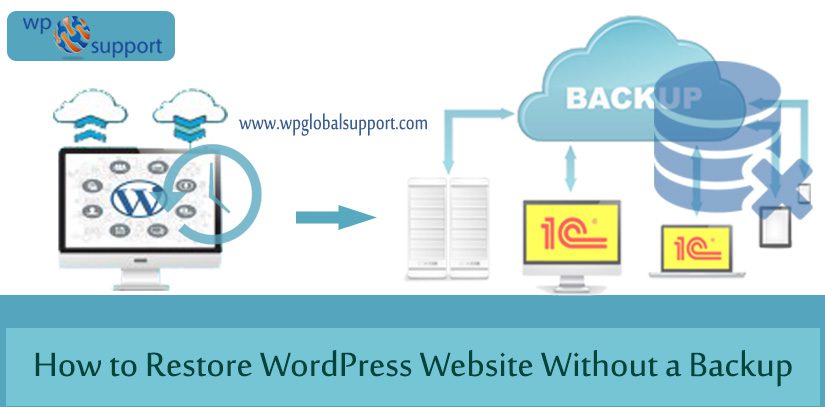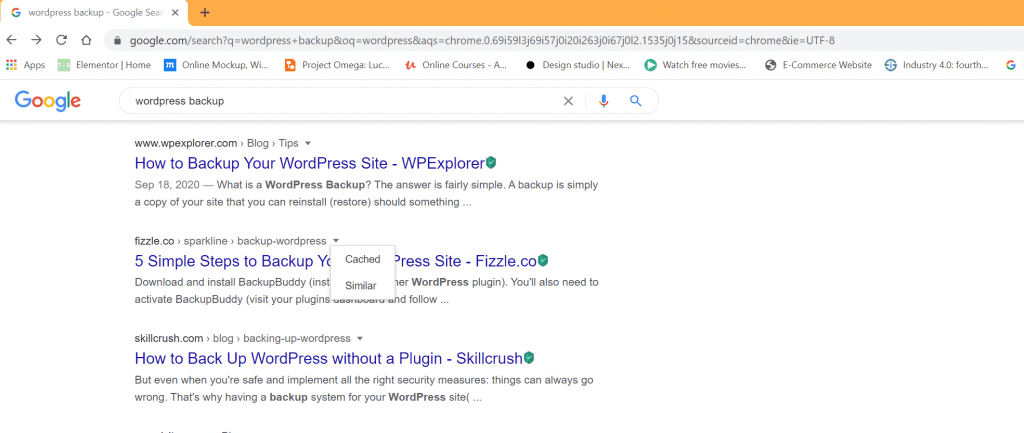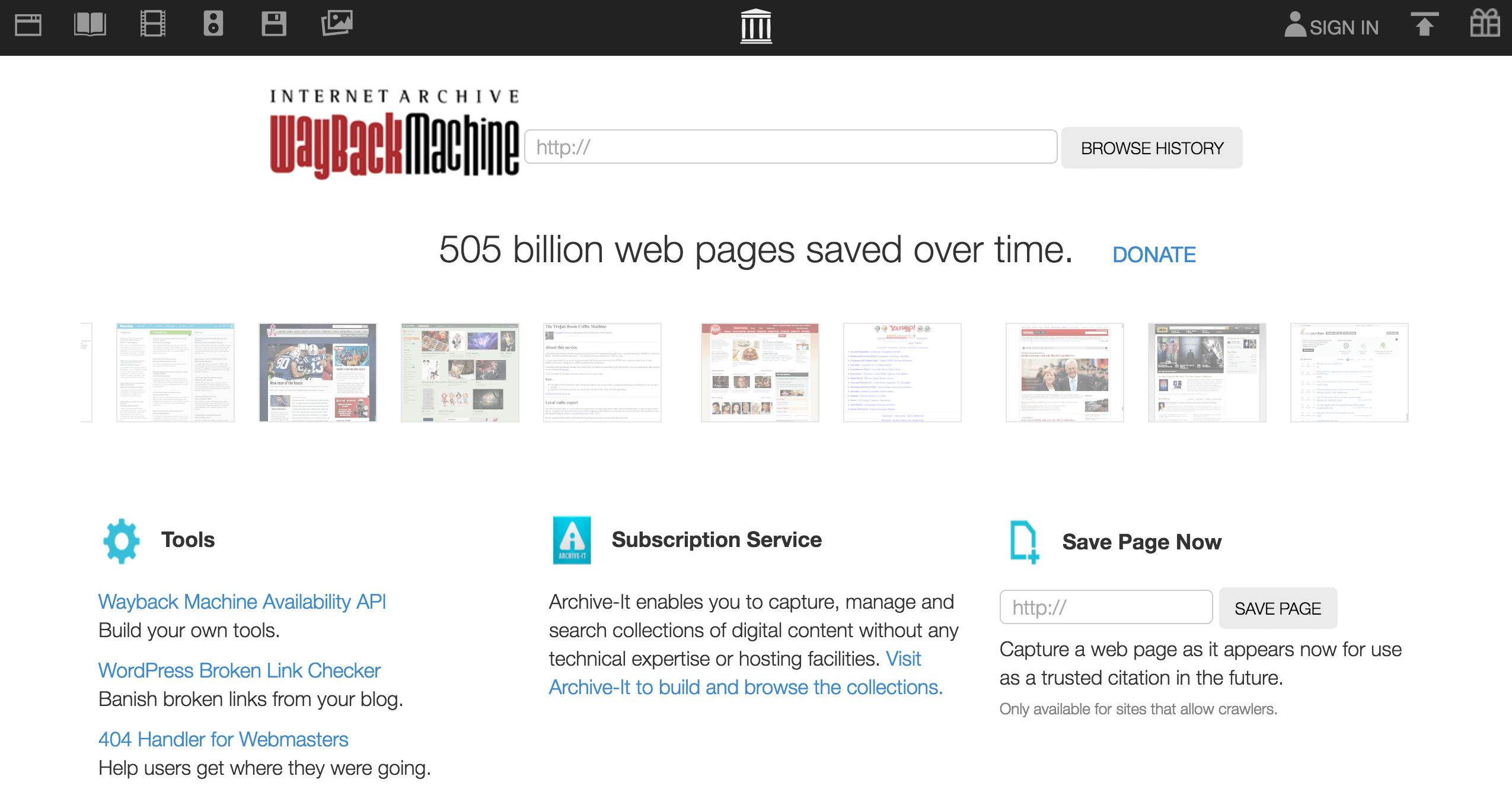
Do you wish to recover your WordPress website Without Backup? In this piece, We will walk through to look to how we restore our WordPress Website.
There are thousands of CMS platforms available but WordPress is the Best for all of us. No one Platform is able to beat WordPress.
“Restore website without backup” means trying to bring back a website that was lost or deleted without having a previous copy or backup to use. This can be a difficult task and may not always be successful. It may involve trying to find and recover lost files or information from the website or rebuilding the website from scratch. It’s always recommended to have a backup of your website for situations like this.
Read out our article on 4 Simple Ways to Backup Your WordPress Site
Importance of website backup
It is important to know how vital is in backing up your WordPress Website and how you can do it adequately. Backups are not only vital in the case of WordPress websites but it is also necessary for various platforms you are using to manage your website. You should have regular backups if you have a website.
- Backup allows you to restore a working version of your website if anything goes wrong with it. As there are many different things that can break a site including a human error, an error occurring during an update, and a server crash. Find out more on working versions.
- A website is not answerable for errors related to a server crash, which is why it is often suggested to examine using a highly secure and reliable hosting service provider. Sometimes, errors related to the server can be so serious as these errors can be fatal for many website crashes which means that it is possible the error can lead your entire website down making it unavailable to the Internet.
- Various data loss can apply to the uploaded videos and images to the site, but it is highly likely to lose an entire website due to the above scenario in a matter of seconds.
- How regularly you have to restore backup depends fully on your personal choice. You can either do it every day or once a week. In case you are one of those webmasters who post more than 30 articles on a continuous basis, you should consider backing up your site more frequently.
Steps to Manually Restore WordPress Websites Without a Backup
Method 1. Restore with Google’s cache or Bing’s cache
Google’s Cache
It is one of the simple ways to restore your website. Google’s Cache is the only caching service that shows functional links and pages completely as the real version of your website. For restoring your website with Google’s cache or Bing’s cache. Follow the below-given steps:
- First of all Search for your website or page on Google’s or Bing’s results page. You would see a down arrow which is next to the listing on your website or page.
- After that click on the arrow. There are two options – Cache and Similar
- As we want a cached copy of your website, click on the Cache option.
- Next Restore your website, pages, or anything you need from this cached copy.


If you are not able to view your website in Google search results, you can also gain the cached copy using this link:
Just replace example.com with your own domain name and click go. It will straightly show you the cached version of your website. After that, copy the source code of the page. At last, store it on your server and recover your website.
Bing’s Cache
Microsoft Bing also caches your pages when it indexes them, and it may be likely to view a cached copy on Bing.
Microsoft said that they were working on a new back-end tracking infrastructure with the goal of providing faster and slightly more suitable search results for users. Known as “Tiger”, the new index-serving technology had been integrated into Bing globally since August of that year. In May 2012, Microsoft announced another redesign of its search engine that included “Sidebar”, a social component that explores users’ social networks for data applicable to the search query
- Explore your page on Bing.
- Glide over your listing so that the single indicator next to the listing appears.
- Glide over the single indicator until the preview of your site limitations.
- Examine the “Cached” link and click on it.
Hopefully, the cached page it shows contains what you need.
Method 2. Restore from the web archive

Another option is the internet archive. It is the largest and oldest archive on the web. However, the drawback is that most of their archived pages are non-functional and broken. So there is no guarantee that you get even 70% of your site’s pages. However, it’s still better than losing your whole website.
The Internet Archive is considered to have the largest database of all the information provided on the Internet, with its terms of use and minimum updates because of the cloud platform available can be used to restore but may risk the site functionality given with its outdated version.
Go to http://archive.org/web/ and search your website in the Wayback Machine search box. The web archive also allows you to browse your website on any day, month, or even year ass all the data is stored as a backup to avoid any scenarios. You may see that some of your web pages are broken or non-functional. Hence it is particularly an alternative method that can be used if you can’t find anything in Google’s cache.
Why is Backing up Your WordPress Website Important?
Before we swoop into the actual ways of repairing your WordPress website, it is important to discuss how important backing up your WordPress is and how you can do it effectively.
Well, backups are not only required in the case of WordPress websites but also in different platforms you are operating to keep your website. In fact, if you have a website, you should have regular blockages.
Backing up your website allows you to retrieve a working version of your website if anything goes amiss with it. As a point of fact, there are different things that can ruin a site including a human error, an error appearing during an update, an outer attack or a brute force attack, and a server impact.
Usually, a website is not liable for mistakes connected to a server crash, so it is usually suggested to use a highly secure and dedicated hosting service provider. Sometimes, errors connected to the server can be so powerful that they can bring your entire website down. You may yield a small part of it, such as videos and images, or a specific design of the website—or you may even lose your entire website in a matter of seconds. definitely, this is what you’d like for your website. Thus, this trouble pretty much describes why you cannot manage regular backups for your website.
How continually you have to store your backup relies entirely on your personal choice. You can either do it daily or one time a week. Essentially, if you are one of those webmasters who publish more than 30 articles on a daily basis, you should think about backing up your site more usually.
Yet, there are also times when you fail your backup. Or maybe you fail to store one in the first position!
So, what would you do if your website fell or smashed and you don’t even have any backup to restore it?
Well, if you are in such difficulty, this article is going to help you restore your website without a backup.
Main Things to do after recovering your website
After successfully restoring your site using Google’s cache or Web Archive, it’s time to secure it to make sure that you don’t lose your website again.
- First of all, set up regular automated backups for your website. If your website was hacked, it is highly suggested to change all your passwords after recovering as your website has already been disclosed to unwanted (and probably damaging) access never know when it gets hacked again.
- If you maintain a multi-user WordPress website, ask every user to change their passwords. Another vital thing to do is to set up a 2-step authentication to add an additional security key to your website.
- There are some plugins that you can assimilate into your website to make your website more secure such as Sucuri, which frequently monitors and strengthens your website security.
- This plugin is invented to check for security threats and scan malware as well. You can also see our guide at Top 10 WordPress Plugins to Detect Malicious Code in Your Site.
FINAL THOUGHTS
It’s always best to take authority for your own website and use a free or premium service to back up and save all the files in a location like DropBox. That is the better risk for a webmaster to restore a website in case of a destructive failure.
But, if it’s too late and you don’t have any backup saved on your system, you can also use one of the above two methods for restoring your website and bounce back. We hope that this article helped you in restoring WordPress websites without a backup. Also, we would highly recommend getting a WordPress backup plugin to keep your files protected and stay safe on the web.
Talk to our WordPress Technical Support team to get instant assistance related to WordPress you can dial +1-888-738-0846 (Toll-Free). We will be pleased to help and support you.
